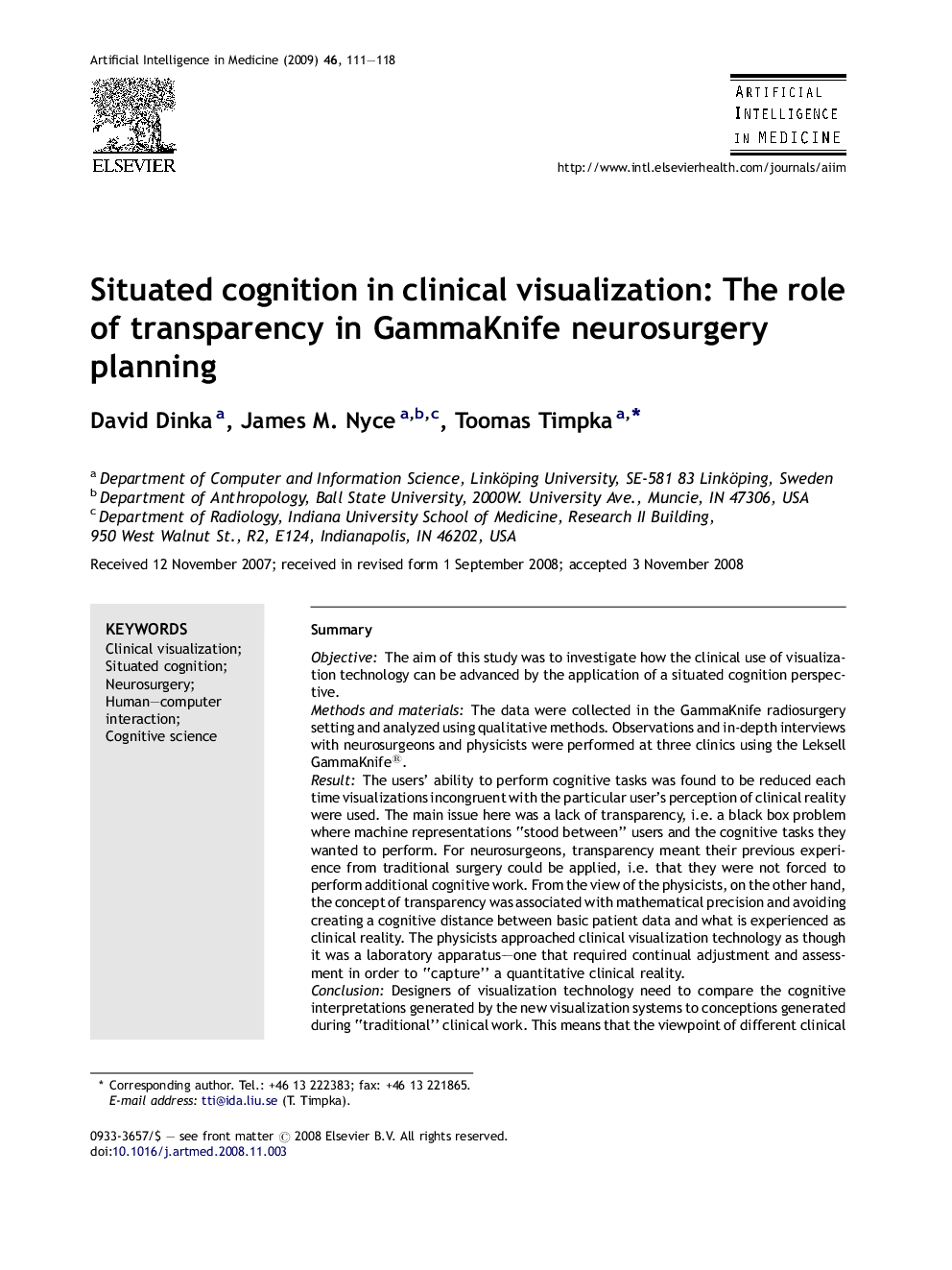| کد مقاله | کد نشریه | سال انتشار | مقاله انگلیسی | نسخه تمام متن |
|---|---|---|---|---|
| 377940 | 658854 | 2009 | 8 صفحه PDF | دانلود رایگان |

SummaryObjectiveThe aim of this study was to investigate how the clinical use of visualization technology can be advanced by the application of a situated cognition perspective.Methods and materialsThe data were collected in the GammaKnife radiosurgery setting and analyzed using qualitative methods. Observations and in-depth interviews with neurosurgeons and physicists were performed at three clinics using the Leksell GammaKnife®.ResultThe users’ ability to perform cognitive tasks was found to be reduced each time visualizations incongruent with the particular user's perception of clinical reality were used. The main issue here was a lack of transparency, i.e. a black box problem where machine representations “stood between” users and the cognitive tasks they wanted to perform. For neurosurgeons, transparency meant their previous experience from traditional surgery could be applied, i.e. that they were not forced to perform additional cognitive work. From the view of the physicists, on the other hand, the concept of transparency was associated with mathematical precision and avoiding creating a cognitive distance between basic patient data and what is experienced as clinical reality. The physicists approached clinical visualization technology as though it was a laboratory apparatus—one that required continual adjustment and assessment in order to “capture” a quantitative clinical reality.ConclusionDesigners of visualization technology need to compare the cognitive interpretations generated by the new visualization systems to conceptions generated during “traditional” clinical work. This means that the viewpoint of different clinical user groups involved in a given clinical task would have to be taken into account as well. A way forward would be to acknowledge that visualization is a socio-cognitive function that has practice-based antecedents and consequences, and to reconsider what analytical and scientific challenges this presents us with.
Journal: Artificial Intelligence in Medicine - Volume 46, Issue 2, June 2009, Pages 111–118